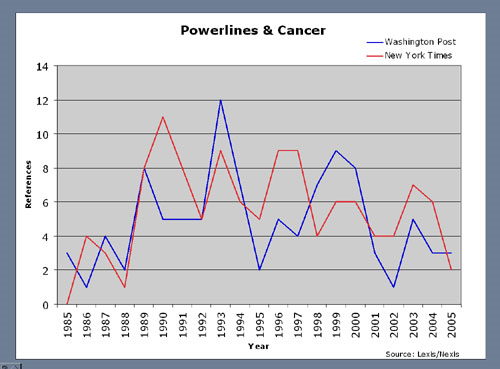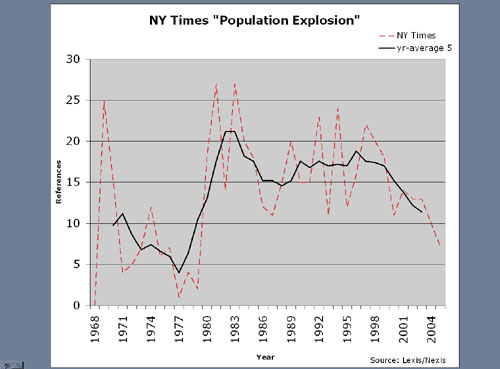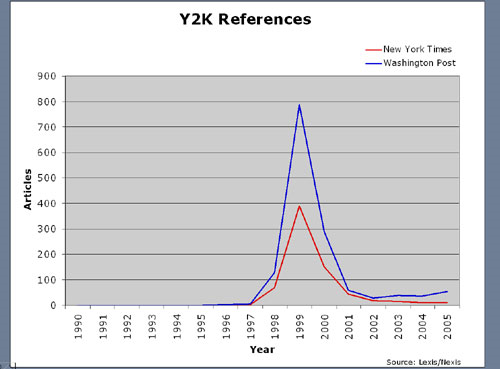And so, the craze for healthier bodies led to books that promised extra long lives if you would merely add to the electric current in your body…but not too much!
Before 1989, there were books like this, which saw magnetic fields as necessary for life.
Then in 1989, Paul Broder’s articles in the New Yorker magazine, a source of erroneous scientific information for many decades. And his strong position brought people that agreed with him. Here’s a consumer’s guide to the issues of electromagnetic fields and how to protect ourselves.
Then a funny thing happened. After about a decade, magnetic fields were rehabilitated, and you can chart that progression here. This is 1997, 1998, 2000, 2001. Now it’s getting sexy. And finally, it’s kind of New Age-y.
Now, the end stage of this process is something like this. Here is an ad that tells you that you need to get this magnetism that exists in the earth. But since nature is drastically depleted, this environmental supplement is incredibly important, and they will sell you magnets to increase your supply of it.
Now, we see we have completed the circle from fear to selling point, from magnetic fields that are too powerful for health to fields that are too weak for health.
Of course, rather than buying these magnets, you could just stand alongside a power line, or sit with your back to a TV set. Snuggle up to a kitchen appliance. There’s lots of ways to increase your exposure to healthful magnetic fields.
I’m reviewing these past fears not to make fun of them, but because I think this back and forth quality, the fears that suddenly rise and subside, are symptomatic of a deeper problem with modern environmental thinking, a problem that we have to face. But meanwhile, the fears do continue to rise and fall. Let’s look at some graphs of past fears.
To get a rough idea of the visibility of fears, I did word search on Nexus for two newspapers, The Washington Post and The New York Times. These provide very rough measures, but they’ll show you a trend. Here’s the graph for power lines and cancer.
As you can see, not much interest. A peak following Broder’s book. A decline here, which I think is people sensibly saying, “Wait a minute,” and then the thing has its own momentum and slowly declines as the whole thesis unravels. Cost of this thing is about $25 billion start to finish.
A similar sort of pattern we have for the population explosion. This may be a little hard to see, but we can run a five-year average of—this is articles that appeared in The New York Times, and you can see finally, we are in serious decline. If this were a stock, sell it.
And finally, here is a much sharper peak for Y2K.
As you see, a sudden spike. Two articles a day in The Washington Post in 1999, and then it collapsed to almost nothing. This later drift upward appears to have two causes. First, there’s a band called Y2K, and second, there’s a steady trickle of self-congratulatory articles in which people say it’s wonderful that we stopped the dreaded crisis in time.
But I only want to emphasize the pattern—new fears rising and falling to be replaced by others that rise and fall. As Mark Twain said, “I’ve seen a heap of trouble in my life, and most of it never came to pass.” But I suggested that this pattern is, in itself, indicative of a problem in how we approach the environment, and I’d like to talk about that now.
Turn to the next page as Crichton expertly shoots down the suppositions that we are in the last days of the environment as we know it!







Some more f****** assholes how much money are the Democrats pay in these assholes
Bs
Hahahaha! So now that most people are not buying the global warming . We are suppose to be afraid of a reversal of something that never happened. Bahahahahah
These schemes rank right up there with the proposed way of dealing with the Yellowstone Super Volcano. Scientist propose pumping water into the lava chamber. Any body ever hear of Krakatoa? When the sea water entered the lava chamber, the whole mountain blew apart.
Truth and action post for illiterates
F**e news
I question a lot of their stories myself.
Global warming is the biggest scam and job killer in history.
BS
And yet here you are,just complaining
AL THE GORACLE forgot to show you the REST OF THE CHART…He cut it off..so you would not see it..and made it look like a HOCKEY STICK.
But further back…during the MEDIVAL WARMING PERIOD…Als chart looked like a PIMPLE COMPARED TO THE GIGANTIC INCREASE OF TEMPERATURE DURING THE MEDIVAL WARMING PERIOD..due to a lot of volcanos going off around the same time…ALL AROUND THE WORLD.
THESE PEOPLE ARE LAIRS….DECEIVERS..
THEY WANT TO CONTROL YOUR MONEY THRU TAXATION SO THEY CAN CONTROL YOU…make you a slave..
GEORGE BUSH SR SAID THAT IF WE KNEW THE TRUTH ABOUT WHAT THEY WERE DOING…WE WOULD BE HANGING THEM FROM THE LAMP POSTS.
HILLARY CLINTON SAID IF TRUMP BECAME PRESIDENT…SHE WOULD BE GOING TO JAIL….BUT HE GOT SOFT ON HER..AND LET HER GO..
or maybe its coming…in the future..I hope..
If we hung a few of these deceiving treasonous evil bastards…this c**p would stop immediately..and all those lying roaches would crawl back into their hole in the wall..